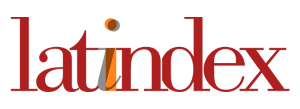English Language Teaching Methods And Approaches
Keywords:
Methods, Approach, New devicesAbstract
The foundation of learning rests upon two key pillars: knowledge dissemination and acquisition. Educators endeavor to impart information to students, drawing upon their own understanding. By embracing innovative approaches within educational institutions, we can not only elevate the quality of learning but also empower individuals, fortify public governance, and expedite the realization of human development objectives within a nation. The current generation of students enjoys access to a diverse array of educational resources, fostering the emergence of new trends that are reshaping the traditional education paradigm. Modern methodologies and advancements underscore the pivotal role of education in its entirety, integrating it seamlessly into human life, prioritizing the quality of knowledge over its quantity, embracing technological integration, and addressing the demand for skilled professionals. Theories and methods pertaining to foreign language instruction, including English language teaching (ELT), are also in a constant state of flux. This article delves into contemporary trends in ELT that have gained global traction, while acknowledging the approaches that held sway in preceding decades. Historically, the study of classical Latin and its grammatical structure laid the groundwork for foreign language pedagogy in schools. Methods and approaches rooted in this tradition culminated in the Grammar-Translation Method (GTM). Subsequently, novel trends such as the communicative approach emerged, significantly altering the landscape of foreign language instruction that implement critical thinking in the process of learning.
References
Almekhlafi A. The effect of Computer –Assisted Language Learning (CALL) on United Arab Emirates EFL School students’ achievement and attitude. Journal of Interactive Learning Research, 17(2), 2006. - P. 121-142.
Current Trends in ELT by Yong Kim Journal of English Teaching. A Triannual Publication on the Study of English Language Teaching. Vol.1 Feb 2011.
Damon W. and E. Phelps. Critical distinctions among three approaches to peer Education, International Journal of Educational Research, 13(1), 1989. – P. 9-19.
Elley Warwick. Conclusion: What have we Learned? International Journal of Educational Research 35, 2001. – P. 237-246.
Maley Alan. Poetry and song as effective language learning activities. In wilga M. Rivers (ed.). Interactive Language Teaching. New York: Cambridge University Press. 1987. – P. 93-109.
Saner Baviskar and Mahajan. Content Cum Methodology English (Communicative Language Teaching). Jalgaon: Prashant Publications. 2012.
Strevents Peter. Interaction outside classroom: Using the community. In Wilga M Rivers (ed.) Interactive Language Teaching. New York: Cambridge University Press, 1987. – P. 170-176.
Trends in the Education of English language Learners by Mary Ann Zehr March 10, 2008.
Lipman, M. (2003). Thinking Education. Cambridge: Cambridge Unversity Press.
Huynh Van Son. (2018). Teaching Critical Thinking in High School: A Hard Work Is for The Teachers to Do.
Downloads
Published
Issue
Section
License

This work is licensed under a Creative Commons Attribution-NonCommercial 4.0 International License.














